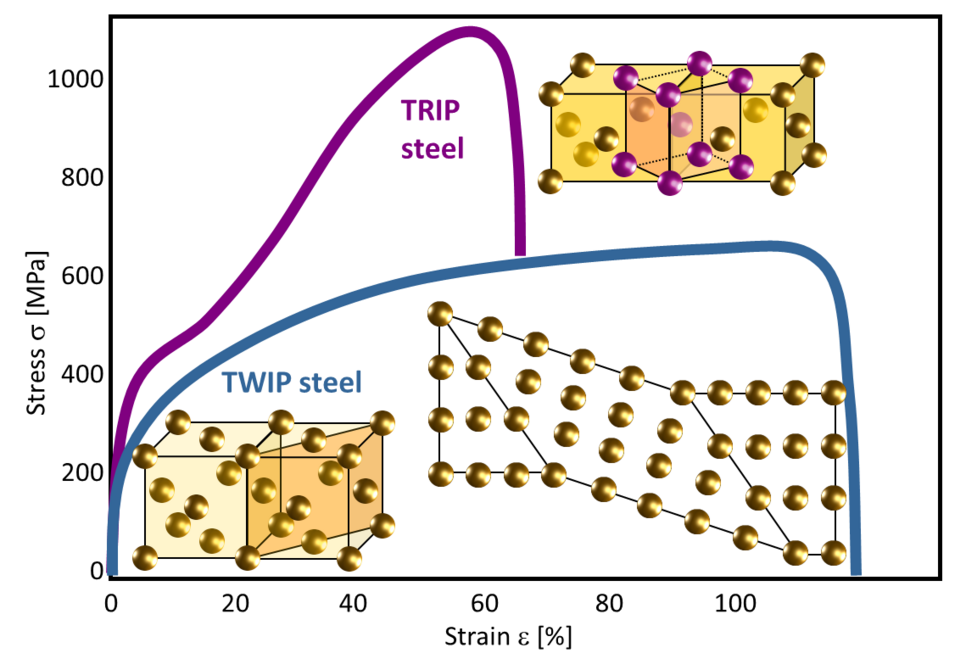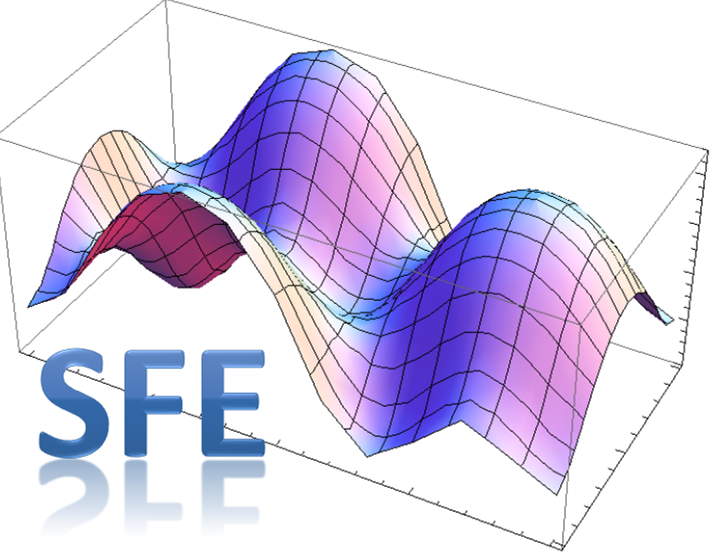Ab initio Based Description of the Stacking Fault Properties in High-Mn Steels
The stacking-fault energy (SFE) is a key parameter to control and predict the extraordinary mechanical properties of high-Mn steels related to the TRIP and TWIP. In this project, the dependence of the generalized SFE on chemistry, temperature and magnetic order is investigated. For example, the puzzle of deviating carbon trends in various experiments has been resolved.

Schematic stress-strain curves for the two dominant deformation mechanisms in high-Mn steels: TRIP and TWIP.
© Tilmann Hickel, Max-Planck-Institut für Eisenforschung GmbH

Generalized stacking fault energy of fcc Fe.
© Ivan Bleskov, Max-Planck-Institut für Eisenforschung GmbH

